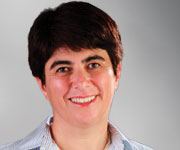MEDICINE can be considered a “female-friendly” profession, with a wide range of career choices and flexible working patterns for those who have completed advanced training.
But this masks the fact that too many medical graduates, particularly women, leave the workforce before completing their training because of difficulty in balancing study, work and family commitments. The cost in time and resources — for the individual and the community — is high.
Medical graduates are now older than in previous generations, and more than half are female. The increased age of doctors in training reflects numerous factors — graduate medical programs, the longer time taken to attain a specialty training position (including the common prerequisite of a higher degree) and the longer duration of training schemes.
When part-time training is added to this mix, the age at which future doctors will achieve the ability to practise independently is significantly increased. The need for flexible advanced training is greatest for women. More so than men, their career choice in medicine is affected by family circumstances and the opportunity to work flexible hours.
We need to acknowledge that our failure to facilitate flexible training and work leads to a loss of female medical graduates, as they drop out of the workforce, unable or unwilling to cope with the demands of work and family. It is a waste.
It is reassuring that the royal colleges are committed to expanding the number of women in training and to ensuring that women are not disadvantaged by college training programs. If the need for increased flexibility of advanced training is indisputable, then its effectiveness must be considered. Does it work?
Trainees who have been able to access flexible training models have reported being more satisfied and enthusiastic than when they were in full-time training, and there is no evidence that continuity of patient care is affected.
The duration of advanced training reflects the need to obtain exposure to the broad range of conditions likely to be encountered in clinical practice, and the need to master specific procedural competencies.
In the latest issue of the Medical Journal of Australia, McCaskie and colleagues point out that training a surgeon is estimated to take more than 15 000 hours, which may account for the scarcity of part-time advanced trainees in surgery. In the same issue, Mahady discusses the different flexible training models that are in use.
There has been little research to evaluate which model may be the most satisfactory. Moreover, we don’t know if a competency model, which may better facilitate flexible training and which could lead to rationalisation of some training requirements, will be effective.
Just as the medical workforce now acknowledges that it is no longer acceptable to say “In my day, we worked 48 hours straight …”, it is time to say that the loss of female talent from our workforce is unacceptable.
Being a good doctor and a good parent need not be mutually exclusive, but it does need to be supported by appropriate training models.
Dr Annette Katelaris is the editor of the Medical Journal of Australia.
This article is reproduced from the MJA with permission.
Posted 2 May 2011

 more_vert
more_vert